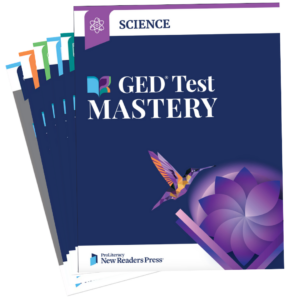Adults who have taken the steps to earn their GED® test credential have done so for a particular reason. It could be they want to open more career opportunities, pursue higher education, or even gain a sense of personal achievement.
 While the timetable is different for everyone, we want to make sure we are making the most out of the time instructors and students are together to effectively prepare students to pass each test on their first attempt.
While the timetable is different for everyone, we want to make sure we are making the most out of the time instructors and students are together to effectively prepare students to pass each test on their first attempt.
We want to ensure students have a solid grasp of the academic knowledge needed to approach each subject confidently, but we can also boost success rates when we reinforce some practical skills for applying that knowledge to the questions on the test. These skills are what the GED Testing Service (GEDTS) calls the high impact indicators.
The high impact indicators are skills that the GEDTS has identified as being applicable across content areas and that can help students grasp concepts faster. For example, GEDTS told us that when students are well-versed in skills like sequencing, they’ll have success in Reasoning Through Language Arts where that skill is used to explain the order of events in a story. But they’ll also be able to transfer that skill to Social Studies, where sequencing may refer to the chronology of events in history. The concept of sequencing is similar and can be presented within the context of each content area.
While all assessment indicators are important for test success, GEDTS said it established the high impact indicators after examining how test takers performed on specific skills related to their scores. In each content area, it looked at those who scored between 140–149 and those who scored between 150–159 and found that those in the higher score range were correctly answering questions that used specific skills, while those in the lower range were not. The skills that contributed to higher scores and test success form the basis for what the GEDTS defines as high impact indicators.
Some examples of high impact indicators include the ability to:
- Calculate and use ratios, percents and scale factors (Mathematical Reasoning)
- Evaluate whether a conclusion or theory is supported or challenged by particular data or evidence (Science)
- Describe people, places, environments, processes, and events, and the connections between and among them (Social Studies)
- Evaluate the relevance and sufficiency of evidence offered in support of a claim (Reasoning through Language Arts)
Because instructional time is limited, a better understanding of how the high impact indicators relate to all the assessment indicators allows instructors to create lesson plans that maximize time spent reinforcing those skills.
“All assessment indicators are equally important to being successful on the GED test,” GEDTS said. “The importance, or value, of the high impact indicators is the educator’s ability to drive instruction by teaching the concepts and skills that have transferability across content areas. We refer to that as ‘getting more bang for the buck’ from instructional time.”
New GED® Test Mastery Series
With this in mind, we developed our new comprehensive instructional series GED® Test Mastery thinking about both the student and instructor experience. We wanted to be sure that GED® Test Mastery was presenting all the content and strategies to successfully get students across the finish line. The series, available to order now, aligns to all the assessment targets, including the high impact indicators, to build the essential critical thinking skills that are measured on the GED test.
 While students move through lessons in the five student books, content is reinforced with guided practice, vocabulary, workplace connections, skills tips, and more. Meanwhile, the Teacher’s Guide gives instructors the tools and instructional strategies to create lesson plans based on GED assessment targets and really focus on building the full range of skills students need to apply the information they are learning.
While students move through lessons in the five student books, content is reinforced with guided practice, vocabulary, workplace connections, skills tips, and more. Meanwhile, the Teacher’s Guide gives instructors the tools and instructional strategies to create lesson plans based on GED assessment targets and really focus on building the full range of skills students need to apply the information they are learning.
The GED assessment targets are listed for each lesson, and the high impact indicators are highlighted in bold to help guide instructors toward those skills that contribute to higher scores test success. In addition, a chart within the Teacher’s Guide lists all of the GED high impact indicators by content area, along with the units and lessons where those skills are taught in the books.
Whatever the reason adult learners set out to earn their GED test credential, our goal is to help them achieve that.